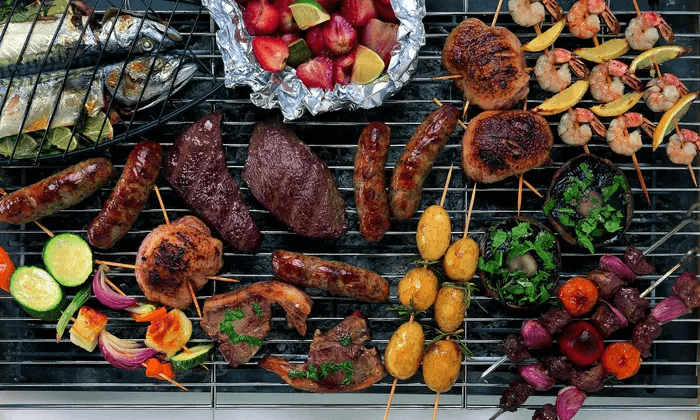Grilling 101: 5 Easy Tips to Become a Grill Master this Summer

Now that summer is well under our belt, it is the perfect time to take advantage of the warm weather. And what better way to do that than by learning how to grill?
Grilling is a great alternative cooking method to baking or frying, and it’s the perfect summer night activity. The science behind how a grill cooks our food is very similar to how an oven does; both are dry cooking methods that involve heat being applied to the surface of the foods from above, below, or the side. Grilling, however, tends to cook foods a lot faster than in the oven due to the food having more direct contact with heat at a higher temperature. Grilling can be a little tricky and a bit overwhelming at first since it requires a lot more hands-on attention than using an oven. But, with these 5 easy tips, you can ease your way into becoming a master griller this summer!
1. Choose Your Grill
The two most common forms of grills you can find are gas grills and charcoal grills. Both are great options when it comes to grilling your food, but they come with very different advantages and disadvantages. Gas grills are a bit pricier than charcoal grills, but they are lighter and easier to set up. Plus, they allow for a bit more temperature control than a charcoal grill. Charcoal grills, on the other hand, give your food a nice, smoky flavor and allow you to reach higher cooking temperatures than a gas grill. However, charcoal tends to need to be repurchased more often than a propane gas tank, and it’s a bit harder to clean a charcoal grill compared to a gas grill. All in all, both grills will get the job done (cooking your food!), so it’s really up to your personal preference.
2. Clean Your Grill Often
A clean grill is so important! Oftentimes, small bits of food or sauce can stick to the cooking grates. Making sure that you are cleaning the grates in between every use is important to prevent food from sticking to the grates in the future. One easy way to clean your grill grates is by rolling up some aluminum foil into a ball and using a pair of tongs to scrape the grates with the tin ball, removing any excess food. It’s also a bit easier to clean the grill when it’s warm. Turning the grill on low heat to warm up the grates will help the food scrape off a lot easier.
3. Know the Grilling Basics
There are a couple of basic grilling tips that every master griller should know that will ensure their food is cooked to perfection. The first is preheating your grill. Just like an oven, a grill needs to be preheated for about 15 minutes before adding any food. Preheating the grill allows for it to reach the ideal cooking temperature along with easing the cleaning of the grill grates, as mentioned in the previous tip. Another basic grilling tip is keeping the grill lid closed. The grill tends to work its best when the lid is closed, as it allows for the heat to better circulate and can even speed up the cooking time.
4. When To Use Indirect vs Direct Heat
The heat source of a grill is usually below the cooking area; therefore, it’s important to understand when you should place your food directly above the heat source or not. Direct heat, or placing the food right above the flames, is best for smaller, more tender foods that only require a small cooking time. This is typically burgers, hot dogs or sausages, vegetables, thin cuts of meat and poultry, and seafood. Indirect heat involves placing the food on the opposite side of the grill that the flame is on. This is ideal for foods that require a longer cooking time to avoid potentially scorching the food. This method is typically used for large, thick pieces of meat like brisket, whole turkeys or chickens, roasts, and ribs.
5. Know What Temperature Foods Should Be Cooked To
When you are grilling, it’s very important to keep a watchful eye on your food to see if they are done cooking. Due to the ability of grills to reach higher temperatures, there is a higher chance of overcooking your meat or burning your vegetables on the grill if left unchecked for too long. One easy way to prevent this from happening is by regularly checking the internal temperature of the food. Foods have a certain required internal temperature they must reach during cooking to ensure that they are safe to consume. Below are a few common foods and their desired internal temperatures:
- 165 degrees Fahrenheit: poultry, stuffed meats, any dishes that were previously cooked (leftovers)
- 145 degrees Fahrenheit: seafood, steaks/chops, game meats (quail, venison, bison, etc.), roasts
- 135 degrees Fahrenheit: fruits and vegetables

